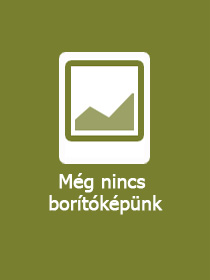
A termék adatai:
| ISBN13: | 9781032220253 |
| ISBN10: | 1032220252 |
| Kötéstípus: | Keménykötés |
| Terjedelem: | 318 oldal |
| Méret: | 246x174 mm |
| Nyelv: | angol |
| 700 |
Témakör:
The Family of Man Revisited
Photography in a Global Age
Kiadás sorszáma: 1
Kiadó: Routledge
Megjelenés dátuma: 2021. október 31.
Normál ár:
Kiadói listaár:
GBP 145.00
GBP 145.00
Az Ön ára:
66 046 (62 901 Ft + 5% áfa )
Kedvezmény(ek): 10% (kb. 7 338 Ft)
A kedvezmény csak az 'Értesítés a kedvenc témákról' hírlevelünk címzettjeinek rendeléseire érvényes.
Kattintson ide a feliratkozáshoz
Kattintson ide a feliratkozáshoz
Beszerezhetőség:
Még nem jelent meg, de rendelhető. A megjelenéstől számított néhány héten belül megérkezik.
Rövid leírás:
The Family of Man is the most widely seen exhibition in the history of photography. The book of the exhibition, still in print, is also the most commercially successful photobook ever published.
Hosszú leírás:
The Family of Man is the most widely seen exhibition in the history of photography. The book of the exhibition, still in print, is also the most commercially successful photobook ever published. First shown at the Museum of Modern Art in New York in 1955, the exhibition travelled throughout the United States and to forty-six countries, and was seen by over nine million people. Edward Steichen conceived, curated and designed the exhibition. He explained its subject as `the everydayness of life' and `the essential oneness of mankind throughout the world'. The exhibition was a statement against war and the conflicts and divisions that threatened a common future for humanity after 1945. The popular international response was overwhelmingly enthusiastic. Many critics, however, have dismissed the exhibition as a form of sentimental humanism unable to address the challenges of history, politics and cultural difference.This book revises the critical debate about The Family of Man, challenging in particular the legacy of Roland Barthes's influential account of the exhibition. The expert contributors explore new contexts for understanding Steichen's work and they undertake radically new analyses of the formal dynamics of the exhibition. Also presented are documents about the exhibition never before available in English. Commentaries by critical theorist Max Horkheimer and novelist Wolfgang Koeppen, letters from photographer August Sander, and a poetic sequence on the images by Polish poet Witold Wirpsza enable and encourage new critical reflections. A detailed survey of audience responses in Munich from 1955 allows a rare glimpse of what visitors thought about the exhibition. Today, when armed conflict, environmental catastrophe and economic inequality continue to threaten our future, it seems timely to revisit The Family of Man.
Tartalomjegyzék:
Revisiting The Family of Man: IntroductionShamoon Zamir and Gerd Hurm2.Reassessing Roland Barthes?s Myth of The Family of ManGerd Hurm3.?The Family of Man?All of Us? (1958) & ?Photography? (1960)Max Horkheimer4.Max Horkheimer and The Family of ManMartin Jay5.?The Camera Will Not Miss Anything? (1955)Wolfgang Koeppen6.Two Letters to Edward SteichenAugust Sander7.The Family of Man in Munich: Visitors? ReactionsShamoon Zamir8.The Family of Man: Looking at the Photographs Now and Remembering a Visit in the 1950s.Werner Sollors9.Picture and Image: Another Look at The Family of ManWinfried Fluck10.Structures of Rhyme, Forms of Participation: The Family of Man as ExhibitionShamoon Zamir11.A Humanism of Relation: Aesthetics and Philosophy of Place in Edward Steichen?s The Family of ManKerstin Schmidt12.Re-Exhibiting The Family of Man: Luxembourg 2013Anke Reitz13.Et in arcadia ego: Death in The Family of ManMiles Orvell14.The Family of Man and Post-War Debates about American Art Ulrike Gehring15.Carl Sandburg?s Journey to The Family of ManEric Sandeen16.Commentary on Photography: The Family of Man (1962)Witold Wripsza. Translated and introduced by Benjamin Paloff.BibliographyContributorsIndex

